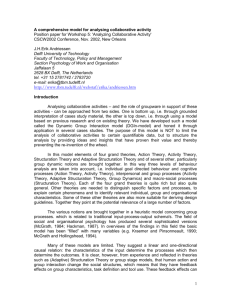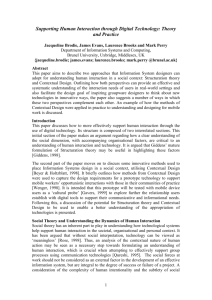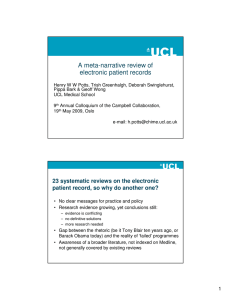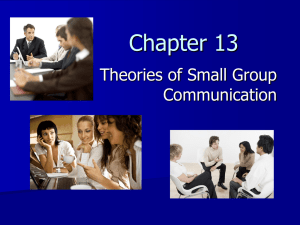Structuration Theory
advertisement
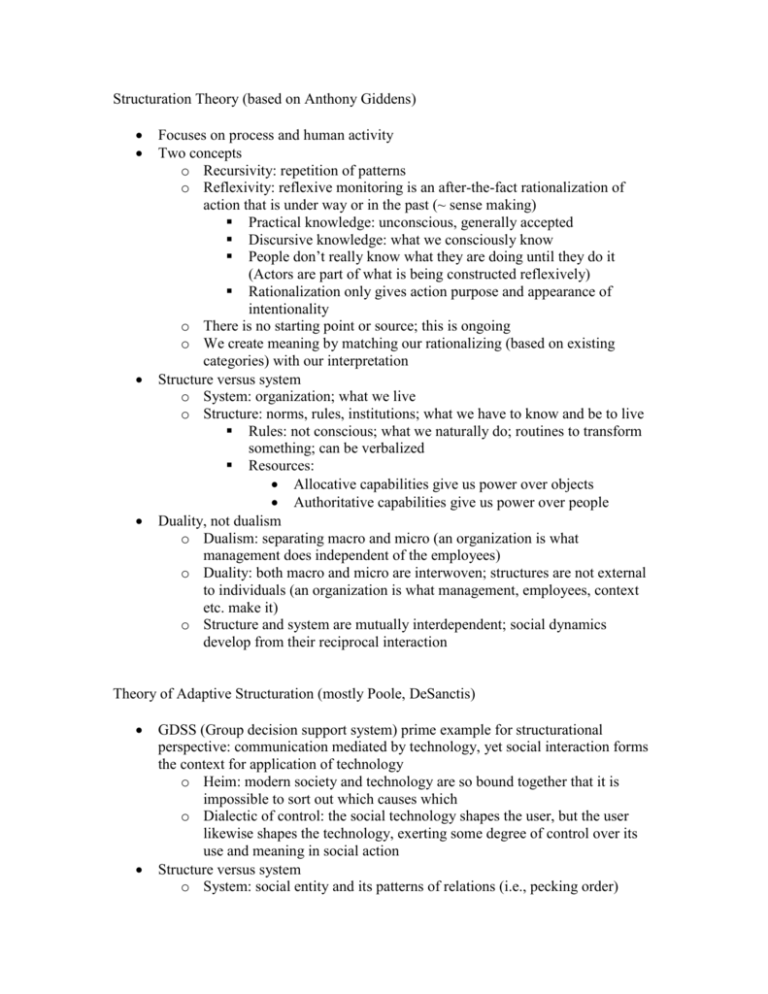
Structuration Theory (based on Anthony Giddens) Focuses on process and human activity Two concepts o Recursivity: repetition of patterns o Reflexivity: reflexive monitoring is an after-the-fact rationalization of action that is under way or in the past (~ sense making) Practical knowledge: unconscious, generally accepted Discursive knowledge: what we consciously know People don’t really know what they are doing until they do it (Actors are part of what is being constructed reflexively) Rationalization only gives action purpose and appearance of intentionality o There is no starting point or source; this is ongoing o We create meaning by matching our rationalizing (based on existing categories) with our interpretation Structure versus system o System: organization; what we live o Structure: norms, rules, institutions; what we have to know and be to live Rules: not conscious; what we naturally do; routines to transform something; can be verbalized Resources: Allocative capabilities give us power over objects Authoritative capabilities give us power over people Duality, not dualism o Dualism: separating macro and micro (an organization is what management does independent of the employees) o Duality: both macro and micro are interwoven; structures are not external to individuals (an organization is what management, employees, context etc. make it) o Structure and system are mutually interdependent; social dynamics develop from their reciprocal interaction Theory of Adaptive Structuration (mostly Poole, DeSanctis) GDSS (Group decision support system) prime example for structurational perspective: communication mediated by technology, yet social interaction forms the context for application of technology o Heim: modern society and technology are so bound together that it is impossible to sort out which causes which o Dialectic of control: the social technology shapes the user, but the user likewise shapes the technology, exerting some degree of control over its use and meaning in social action Structure versus system o System: social entity and its patterns of relations (i.e., pecking order) o Structures: rules and resources actors use to generate and sustain a system GDSS provide rules which can be used to generate structuration Spirit: goals and attitudes aimed to promote (democracy) Features: mostly technical limitations (i.e., voting once) Structures are both medium and outcome of action (process of structuration) Process of structuration takes place in interaction Structuration o Structuration is the process by which systems are produced and reproduced through members’ use of rules and resources o It takes into account technology and its structures; context and its structures; interactive structuring process (human influence) o Successful groups match technology to task, but also task to technology Orlikowski said (among many other things): Structuration (overcomes objective/subjective distinction; social process that involves the reciprocal interaction of human actors and structural features of organizations; humans are restrained by structures, which they have created; structures: meaning, power, and norms) Interpretive schemes (stocks of knowledge used to analyze what’s going on) Duality of technology: technology is physically and socially created and changed by humans, but also used to accomplish action; when it becomes institutionalized, it appears objective Technology has interpretive flexibility (the interaction of technology and organizations depends on the people and the contexts) From what concepts in (adaptive) structuration theory did Orlikowski get meaning, power, norms, and interpretive schemes? Related Perspectives: Functionalism: society as system, people as its parts Strucuralism: focuses on social patterns Hermeneutics: science of interpretation Interpretivism: emphasizes individual sense-making activities Input-Process-Output (IPO) Theories: group processes influence outcomes Systems Theory(ies): organizations are organisms and communication is the lifeblood

